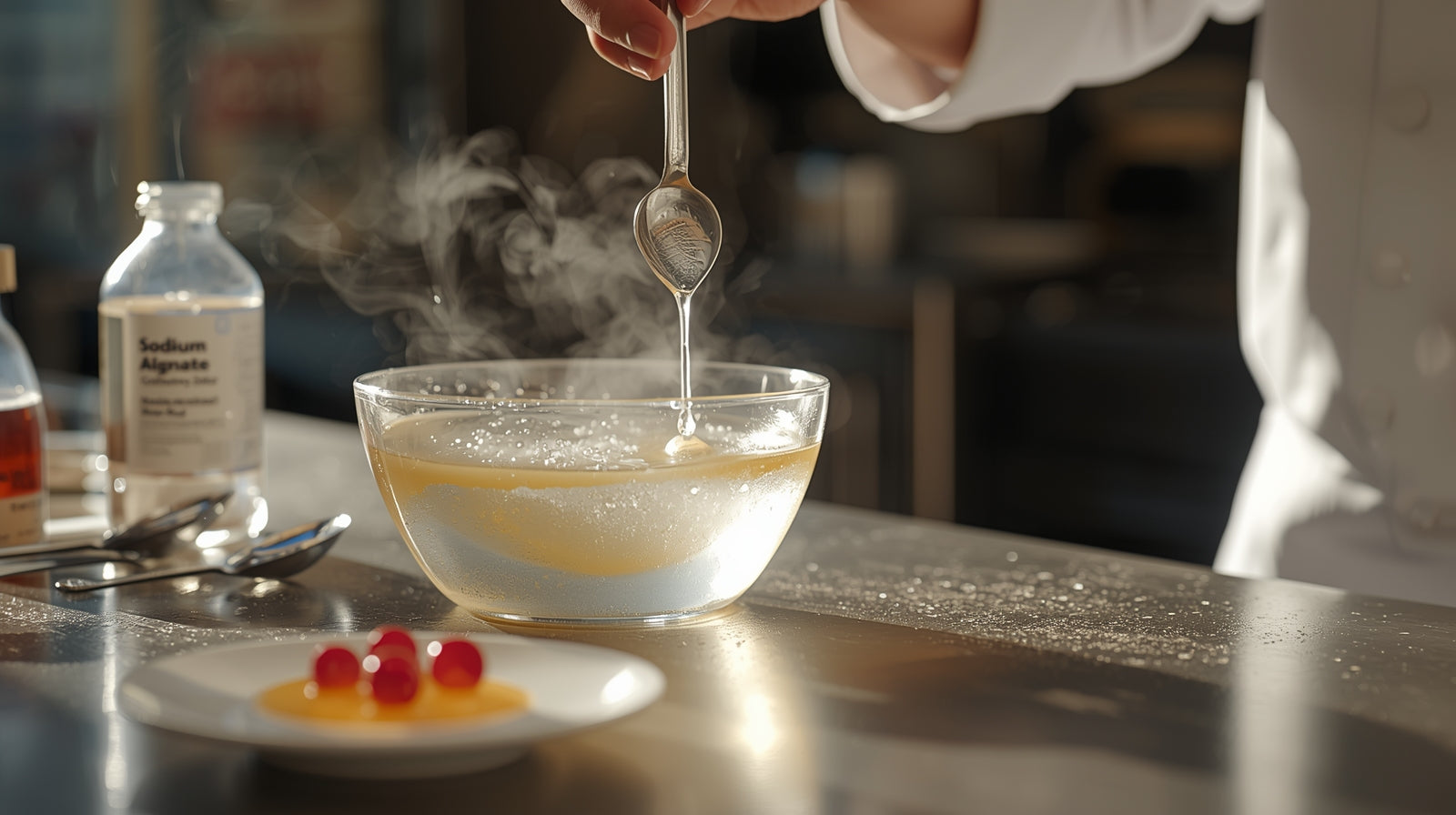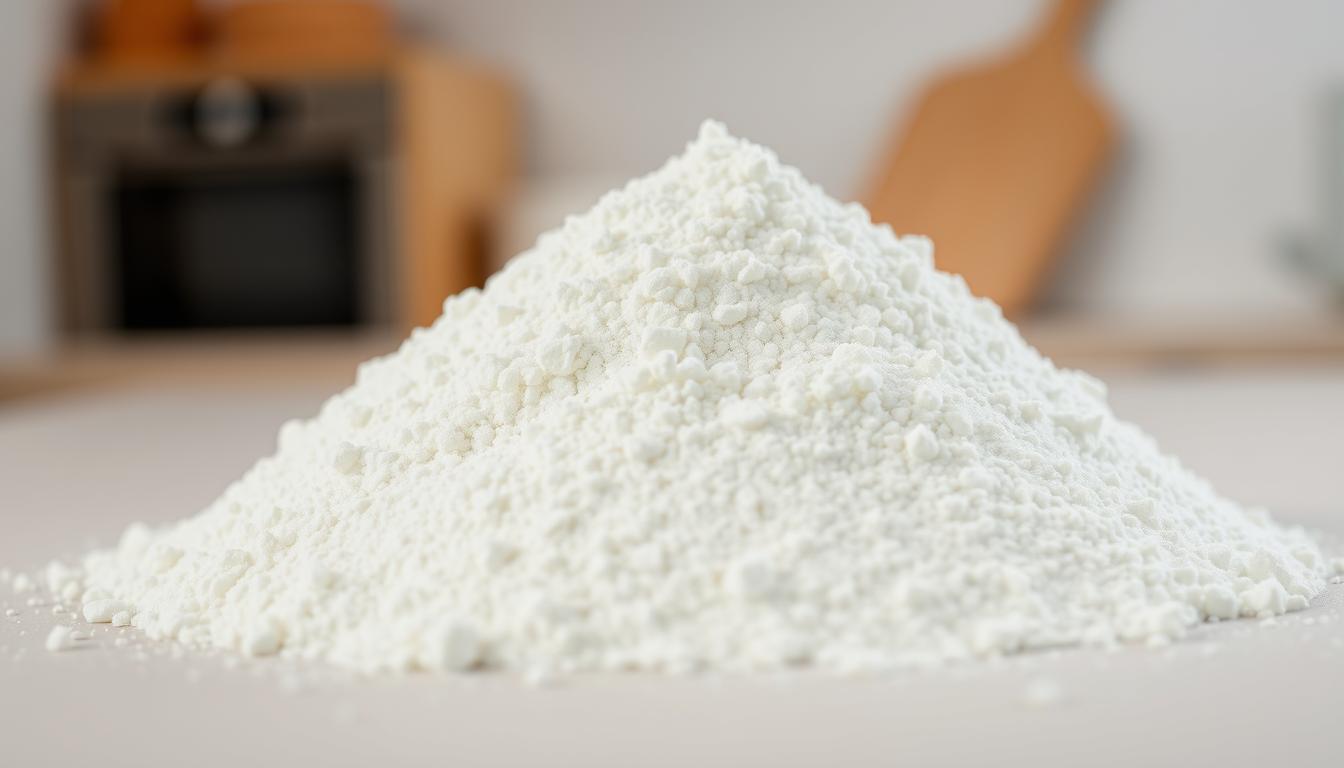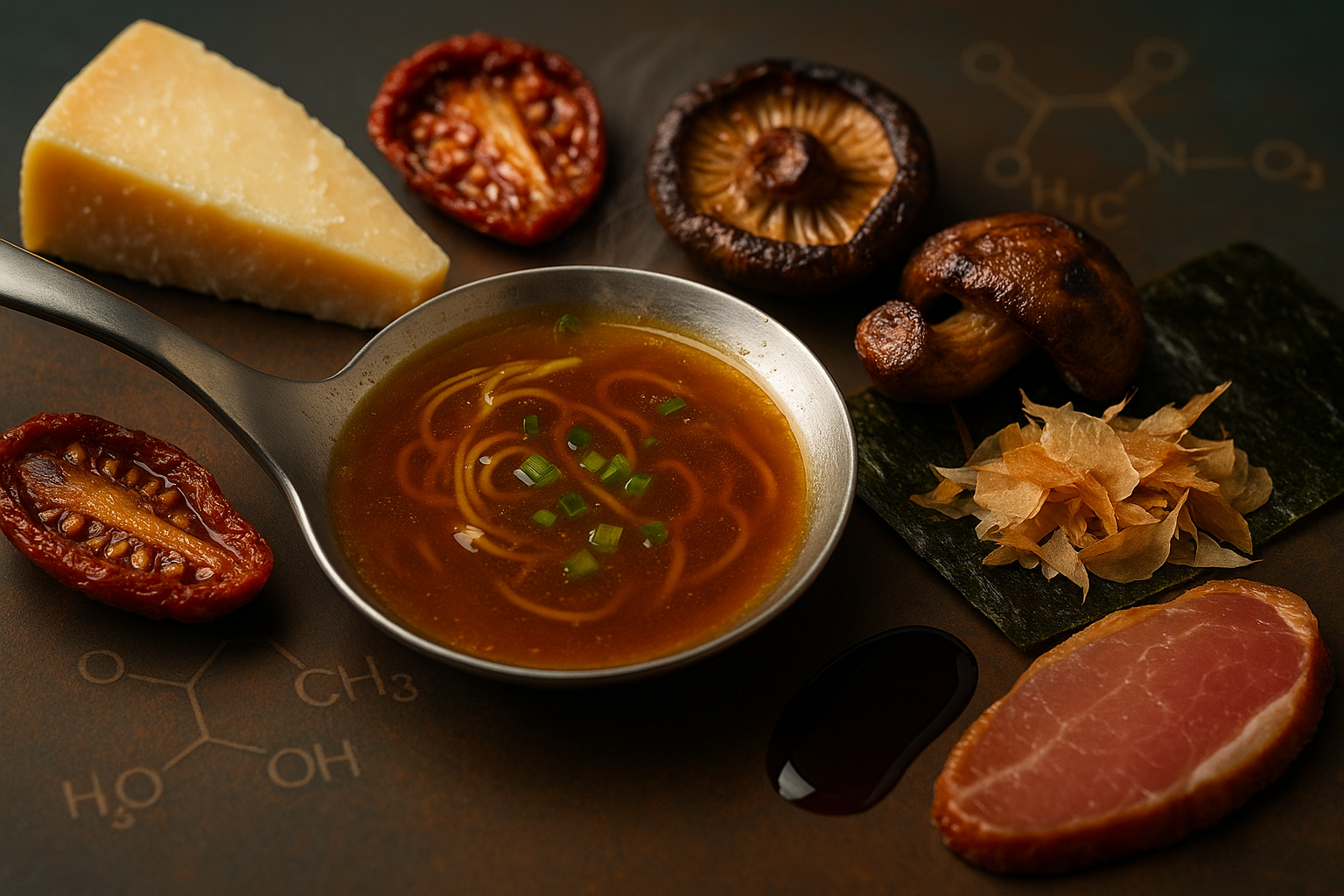
Types of Hydrocolloids: Natural vs Synthetic
SUBSCRIBE TO OUR BLOG
Promotions, new products, and recipes.
Hydrocolloids are among the most widely used ingredients in various industries. They are known for their ability to improve the texture, stability, and overall quality of different products. Hydrocolloids can be broadly classified into natural and synthetic forms, each with its unique set of characteristics and applications.
Key Takeaways:
- Hydrocolloids are important ingredients in various industries.
- Natural and synthetic hydrocolloids have different characteristics and applications.
Understanding Hydrocolloids
Hydrocolloids are substances that form gels or solutions when dispersed in water. They can be natural or synthetic and have a wide range of applications in various industries, including food, pharmaceuticals, and personal care.
Food grade hydrocolloids are commonly used in the food industry as thickeners, stabilizers, and emulsifiers. Hydrocolloid gum, such as xanthan gum and guar gum, are some of the most widely used types of hydrocolloids. Hydrocolloid stabilizers, on the other hand, are used to prevent the separation of ingredients in food products and improve their texture.
Hydrocolloids are particularly important in the food industry, as they enhance the quality, texture, and stability of food products. They are used to improve the mouthfeel of food products, prevent syneresis (the separation of liquid from a gel), and enhance the flavors and aromas of food.
Types of Hydrocolloid Gums
Hydrocolloid gums are a subgroup of hydrocolloids and are commonly used as thickeners and stabilizers in food products. Some of the most common hydrocolloid gums used in the food industry include:
| Hydrocolloid gum | Source | Function |
|---|---|---|
| Xanthan gum | Fermentation of sugars by the bacterium Xanthomonas campestris | Thickener, emulsifier, stabilizer |
| Guar gum | Seed of the guar plant, Cyamopsis tetragonoloba | Thickener, stabilizer |
| Locust bean gum | Seed of the carob tree, Ceratonia siliqua | Thickener, stabilizer |
Hydrocolloid gums are usually added to food products in small quantities and can significantly improve their texture and stability. They are particularly useful in low-fat or fat-free products, where they can replace some of the texture and mouthfeel lost due to the absence of fat.
Overall, hydrocolloids play an essential role in the food industry and many other industries by improving the quality, texture, and stability of various products. With an understanding of the different types of hydrocolloids and their functions, manufacturers can create products that meet consumers' preferences for texture, stability, and sensory attributes.
Natural Hydrocolloids
Natural hydrocolloids are polysaccharides derived from plants and animals, with unique physical and chemical properties that make them valuable ingredients in various applications. Their ability to form gels, thicken, stabilize, and emulsify makes them essential in industries such as food, pharmaceuticals, and cosmetics.
The benefits of using natural hydrocolloids are manifold. They are renewable, biodegradable, and have a clean label appeal, making them an attractive choice for consumers who value sustainability and natural ingredients. Additionally, natural hydrocolloids offer health benefits, such as improved gut health and reduced blood glucose levels, making them a popular choice in the functional food sector.
| Types of Natural Hydrocolloids | Applications | Benefits |
|---|---|---|
| Agar | Food, pharmaceuticals, microbiology | Thermoreversible gelling agent, vegan alternative to gelatin, high in fiber and minerals |
| Alginate | Food, pharmaceuticals, personal care | Forms strong, elastic gels, stabilizes emulsions, enhances texture, high in fiber and minerals |
| Carrageenan | Food, pharmaceuticals, personal care | Forms strong, elastic gels, stabilizes emulsions, enhances texture, may have anti-inflammatory properties |
| Guar Gum | Food, pharmaceuticals, cosmetics | Thickener, stabilizer, improves texture, may have cholesterol-lowering properties |
| Xanthan Gum | Food, pharmaceuticals, personal care | Thickener, stabilizer, improves texture, may have prebiotic properties |
These are just a few examples of the many natural hydrocolloids available on the market. Their diverse characteristics and functionalities enable them to be used in a wide range of products, from dairy alternatives to gluten-free baked goods to plant-based meat substitutes.
Through ongoing research and innovation, the applications of natural hydrocolloids continue to expand, as does their potential to meet growing consumer demand for sustainable and health-promoting ingredients.
Synthetic Hydrocolloids
Synthetic hydrocolloids are manufactured artificially through chemical processes and are widely used in various industries, including food, pharmaceuticals, and personal care. These versatile compounds have diverse properties that make them effective as thickeners, stabilizers, and emulsifiers.
One of the key advantages of synthetic hydrocolloids is their consistent performance, which is paramount in industries where product quality and stability are critical. They also tend to be more cost-effective than natural hydrocolloids, making them an attractive option for manufacturers.
In the food industry, synthetic hydrocolloids are used extensively to achieve specific texture and sensory attributes in products such as sauces, dressings, and baked goods. They can also enhance the shelf life and stability of food products, improving their overall quality.
The hydrocolloid market for synthetic compounds is expected to grow in the coming years, driven by the increasing demand for convenience foods, processed and packaged goods, and functional ingredients. However, there is also a growing trend towards natural, clean-label ingredients, which may limit the growth potential of synthetic hydrocolloids in some markets.
Characteristics of Hydrocolloids
Hydrocolloids are versatile ingredients that exhibit a range of physical and chemical characteristics. Both natural and synthetic hydrocolloids share similar properties, although there are some differences between the two categories.
Natural hydrocolloids, derived from plant, animal, or microbial sources, have unique properties that make them desirable in various applications. They are often preferred in the food industry due to their clean label appeal and consumer perception of being natural and healthy. Some examples of natural hydrocolloids include carrageenan, xanthan gum, and agar.
Synthetic hydrocolloids, on the other hand, are derived from chemical processes and are designed to mimic the properties of natural hydrocolloids. They are often preferred in industrial applications due to their consistent performance and cost-effectiveness. Some examples of synthetic hydrocolloids include carboxymethyl cellulose (CMC), methylcellulose, and polyvinyl alcohol (PVA).
Both natural and synthetic hydrocolloids have the ability to form gels, thicken, stabilize, and emulsify. They are also able to modify texture, appearance, and sensory properties of a product. Hydrocolloids typically function by interacting with water molecules, forming a network that provides structural support and stability.
Other important characteristics of hydrocolloids include their solubility, viscosity, and gel strength. The solubility of a hydrocolloid refers to its ability to dissolve in a solvent, such as water or oil. Viscosity refers to the resistance of a liquid to flow, and it can be influenced by the concentration and type of hydrocolloid used. Gel strength refers to the firmness of a hydrocolloid gel, which can vary depending on the type and amount of hydrocolloid used.
Applications of Hydrocolloids
Hydrocolloids are widely used in various industries due to their unique properties and functions. They are commonly employed as thickeners and stabilizers in food products, enhancing their texture, mouthfeel, and appearance. Hydrocolloids can also be used as gelling and emulsifying agents, improving the shelf life and sensory characteristics of food formulations.
Aside from the food industry, hydrocolloids are utilized in pharmaceuticals, personal care products, and paints. In pharmaceuticals, hydrocolloids are used as binders, disintegrants, and film-forming agents. They are also used in the personal care industry as thickening agents and emulsifiers in creams, lotions, and shampoos.
The use of hydrocolloids in paints improves their consistency and prevents settling and sedimentation of pigments. They also improve the adhesion and spreadability of the paint, resulting in a smoother finish.
Overall, hydrocolloids have a broad range of applications, making them a vital component in many products. Their versatility and functionality make them an essential ingredient in the food and allied industries, helping to improve product quality and stability.
Benefits of Hydrocolloids
Hydrocolloids offer numerous benefits in various industries, including food, pharmaceuticals, and cosmetics. In the food industry, hydrocolloids are used as thickeners, stabilizers, and texture modifiers.
Natural hydrocolloids, in particular, have grown in popularity due to their clean label appeal and health benefits. They are often extracted from plant-based sources, such as seaweed, and provide functional properties that can replace synthetic additives. For example, gellan gum, a natural hydrocolloid, can be used as a stabilizer in dairy products instead of carrageenan, a synthetic hydrocolloid that has been criticized for its potential health risks.
Synthetic hydrocolloids also offer advantages, such as consistent performance and cost-effectiveness. They are often produced through chemical processes and can provide functionalities that are not found in natural hydrocolloids. For example, xanthan gum, a synthetic hydrocolloid, has a unique viscosity profile that allows it to create gels and suspensions that are not possible with natural thickeners.
Overall, the benefits of hydrocolloids in various industries cannot be overstated. Whether naturally or synthetically sourced, hydrocolloids play a crucial role in enhancing product quality, texture, and stability.
Hydrocolloids in the Food Industry
Hydrocolloids play a critical role in the food industry, where they are used to improve texture, stability, and overall sensory experience. Natural hydrocolloids, such as agar, carrageenan, and xanthan gum, are commonly utilized in food products, due to their functional properties and clean label appeal.
Agar, derived from seaweed, is a popular hydrocolloid used in dessert and confectionery products to create a smooth texture and enhance mouthfeel. Carrageenan, also extracted from seaweed, is used as a thickener and stabilizer in dairy products, such as ice cream and yogurt. Xanthan gum, a bacterial fermentation product, is a versatile hydrocolloid widely used in many food products, including sauces, dressings, and bakery items, to improve texture and shelf-life.
Synthetic hydrocolloids, such as carboxymethyl cellulose (CMC) and methylcellulose (MC), are also used in the food industry, particularly in processed and convenience foods. CMC is commonly added to bakery products, frozen desserts, and beverages to enhance viscosity and prevent syneresis. MC, on the other hand, is used in meat products, such as sausages and burgers, to improve texture and juiciness.
Overall, hydrocolloids are essential ingredients in the food industry, providing numerous benefits in terms of product quality, stability, and functionality. As consumer demand for clean label and natural ingredients continues to grow, the use of natural hydrocolloids is expected to increase, while synthetic hydrocolloids may face more scrutiny and regulation.
Emerging Trends and Innovations in Hydrocolloids
The hydrocolloid market is constantly evolving, driven by consumer demands for clean and sustainable ingredients. As a result, there is a growing trend towards natural hydrocolloids, which are derived from plant-based or animal-based sources.
Natural hydrocolloids offer numerous advantages over synthetic alternatives. They are often perceived as healthier and more environmentally friendly, as they are free from chemical additives and produced using sustainable farming practices. Moreover, the clean label appeal of natural hydrocolloids has increased their popularity in the food industry, where consumers are looking for products with fewer artificial ingredients.
The demand for natural hydrocolloids is driving innovation, with manufacturers exploring novel sources and production methods. For example, chia seeds, seaweed, and flaxseed are emerging as potential sources of natural hydrocolloids, offering unique functional properties and health benefits.
At the same time, developments in processing technologies have enabled the production of more complex hydrocolloid structures, allowing for a wider range of applications. For instance, hydrocolloid-based encapsulation systems are being developed to deliver active ingredients in pharmaceuticals and personal care products.
Synthetic hydrocolloids continue to have a significant presence in the market, particularly in the food industry, where they offer consistent performance and cost-effectiveness. However, there is a growing demand for natural alternatives, which is driving manufacturers to develop synthetic hydrocolloids that mimic the functionality of natural hydrocolloids.
The hydrocolloid market is expected to grow in the coming years, driven by increasing demand from developing regions and a rise in disposable income. However, the industry must navigate regulatory challenges, as there is increasing scrutiny on the safety and sustainability of hydrocolloid production.
As consumer demands for clean and sustainable ingredients continue to grow, the hydrocolloid industry is undergoing significant changes. Natural hydrocolloids are emerging as a popular alternative to synthetic ones, offering a range of functional and health benefits. Innovations in processing technologies and new sources of natural hydrocolloids are driving product development and widening the range of applications. However, synthetic hydrocolloids are still widely used, particularly in the food industry, and offer cost-effective solutions. As the hydrocolloid market continues to grow, manufacturers must balance the demand for natural and synthetic hydrocolloids while addressing regulatory challenges and ensuring sustainable production practices.
Future Outlook for Hydrocolloids
The global hydrocolloid market is expected to grow at a significant rate over the next few years, driven by the increasing demand from various industries, such as food and beverage, pharmaceutical, and personal care. Synthetic hydrocolloids are expected to continue dominating the market due to their cost-effectiveness and versatility in various applications.
However, the trend towards clean and sustainable ingredients is expected to impact the hydrocolloid market, with a growing preference towards natural hydrocolloids. Manufacturers are increasingly investing in research and development to develop new natural hydrocolloid-based products that meet consumer preferences.
Regulatory developments and restrictions on the use of certain synthetic hydrocolloids in food and pharmaceutical applications could also impact the market share of synthetic hydrocolloids and drive further demand for natural alternatives.
Technological advancements in hydrocolloid production, such as the use of novel sources and processing techniques, are expected to create new opportunities for the industry. Hydrocolloids with enhanced properties, such as improved stability and texture, are likely to become more prevalent in the market.
Overall, the hydrocolloid market is poised for significant growth, with both opportunities and challenges ahead. The industry is expected to continue to innovate and develop new solutions to meet the evolving needs and preferences of consumers and manufacturers alike.
Conclusion
Hydrocolloids are essential ingredients used in various industries, including food, pharmaceuticals, and personal care. They are versatile substances that can thicken, stabilize, and emulsify products, ultimately enhancing the quality, texture, and stability of the final product.
In this article, we explored the distinction between natural and synthetic hydrocolloids and the characteristics of each. Natural hydrocolloids are sourced from plant and animal materials, while synthetic hydrocolloids are derived from chemical processes. We also discussed the different types of hydrocolloids commonly used, such as food grade hydrocolloids, hydrocolloid gum, and hydrocolloid stabilizers.
We highlighted the diverse applications of hydrocolloids, particularly in the food industry, where they are used as thickeners, stabilizers, and texture modifiers. Additionally, we discussed the benefits of natural hydrocolloids, including their clean label appeal and health benefits, while also recognizing the advantages of synthetic hydrocolloids, such as their consistent performance and cost-effectiveness.
As the demand for clean and sustainable ingredients continues to grow, we explored the emerging trends and innovations within the hydrocolloid industry, particularly the increasing interest in natural hydrocolloids. Lastly, we considered the future outlook for hydrocolloids, recognizing the potential challenges and opportunities in the industry, particularly in relation to synthetic hydrocolloids.
Overall, hydrocolloids are critical ingredients that play a vital role in numerous industries. Their importance in enhancing product quality, texture, and stability cannot be overstated, and it's clear that they will continue to play an essential role in the years to come.
FAQ
Q: What are hydrocolloids?
A: Hydrocolloids are substances that are capable of forming gels when mixed with water. They have the ability to thicken, stabilize, and emulsify, making them useful in various industries.
Q: What is the difference between natural and synthetic hydrocolloids?
A: Natural hydrocolloids are derived from plants or animals and are minimally processed. Synthetic hydrocolloids, on the other hand, are chemically synthesized and designed for specific applications.
Q: What are the common applications of hydrocolloids?
A: Hydrocolloids are widely used in the food industry as thickeners, stabilizers, and texture modifiers. They are also utilized in industries such as pharmaceuticals, personal care, and paints.
Q: What are the benefits of using hydrocolloids?
A: The benefits of hydrocolloids vary depending on the type. Natural hydrocolloids often have clean label appeal and may offer health benefits. Synthetic hydrocolloids provide consistent performance and are cost-effective.
Q: How are hydrocolloids used in the food industry?
A: Hydrocolloids are commonly used in the food industry to improve texture, stability, and sensory attributes of products. They serve as thickeners, stabilizers, and emulsifiers in various food applications.
Q: What are the emerging trends and innovations in hydrocolloids?
A: The hydrocolloid industry is experiencing a growing demand for natural hydrocolloids and the development of new products that align with consumer preferences for clean and sustainable ingredients.
Q: What is the future outlook for hydrocolloids?
A: The future of hydrocolloids is influenced by factors such as market growth, technological advancements, and regulatory developments. Synthetic hydrocolloids may face challenges, while natural hydrocolloids are expected to thrive.
For future reading: Common hydrocolloids


|
About the Author Ed is the founder of Cape Crystal Brands, editor of the Beginner’s Guide to Hydrocolloids, and a passionate advocate for making food science accessible to all. Discover premium ingredients, expert resources, and free formulation tools at capecrystalbrands.com/tools. — Ed |
Enjoyed this post? Subscribe to The Crystal Scoop
Food-science tips, ingredient know-how, and recipes. No spam—unsubscribe anytime.
- Choosing a selection results in a full page refresh.




